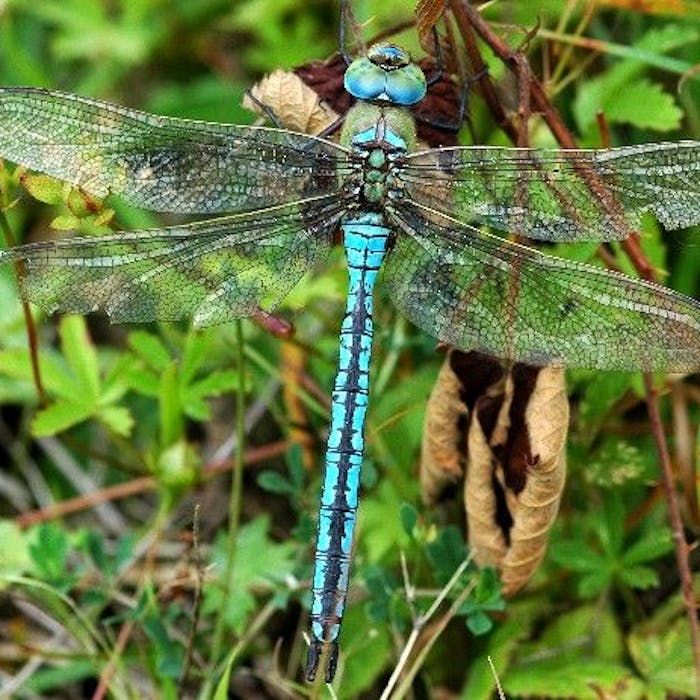
Dragonflies and damselflies - 57 delightful varieties
Dragonflies and damselflies are a countryside delight in Britain during the summer months - familiar for their iridescent pairs of double wings, colourful bodies and darting flight.
They are part of the odanata order of flying insects, of which there are 57 species in Britain - with 17 species of damselfly and 23 species of dragonfly resident in the UK. They can be found in almost every habitat, but favour wetlands, moorlands and ponds and river banks.
Although dragonflies and damselflies can appear very similar, there are differences. As a general rule, the damselfly is slimmer, and rests with wings folded, while the stockier dragonfly keeps its wings spread outward. Dragonflies have hind wings that broaden at the base, which makes them larger than the front set of wings. Damselflies have wings that are the same size and shape for both sets, and they also taper down as they join the body, becoming quite narrow as they connect. Dragonflies have much larger eyes than damselflies, with the eyes taking up most of the head.
The earliest damselflies are flying by early May, and the last examples may still be flying on a warm October day. The highest species diversity is found during July and August.
Most of the damselflies and dragonflies' 6-month lifespan is spent in larval form beneath the water surface, predating upon other invertebrates. In Britain, most damselflies live for about a week, and dragonflies for two-to-three weeks, as free-flying adults. They die from accidents and predation, and large numbers from starvation – in poor weather neither they nor their prey can fly.
Adult dragonflies eat other flying insects, particularly midges and mosquitoes. They also will take butterflies, moths and smaller dragonflies. The larvae, which live in water, eat almost anything living that is smaller than themselves - usually bloodworms. Among the species that catch and eat adult dragonflies and damselflies are birds (e.g. Wagtails and Hobbies), spiders (many damselflies are caught in webs), frogs, and even larger species of dragonflies.
When dragonflies and damselflies first emerge from their water-borne larval stage, most have muted colours. Depending on weather conditions, it can take a few days for them to gain their bright adult colour. Common Blue damselflies are often a pale pinkish-brown rather than sky-blue on first emergence.
Some of the more common dragonflies and damselflies in the UK include Southern hawker; Emperor dragonfly; Four-spotted chaser; Emerald damselfly; Blue-tailed damselfly and Common blue damselfly.
Well-known places to spot the profusion of dragonflies and damselflies in Britain include: Black Lake in Cheshire's Delamere Forest Park; Summerseat Nature Reserve in Lancashire; Falstone Moss in Northumberland; Upton Heath in Dorset; Decoy Heath in Berkshire; Carr Vale Flash in Derbyshire; Lackford Lakes in Suffolk; and Glenn Moss Wildlife Reserve in Scotland.
Further reading
Links to external websites are not maintained by Bite Sized Britain. They are provided to give users access to additional information. Bite Sized Britain is not responsible for the content of these external websites.
